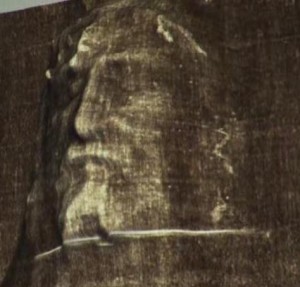
The silence is perfect, the looks are concentrated and the emotion is touched with hand: all the students are always full of amazement every time I explain the Shroud. That silent witness struck again. His last hours of life deducted from the sheet, cause precious questions. But we go back in time, to that Friday, April 3 of the year 33 A.D. (it seems that the most supported date, is precisely this one)
1
The Shroud comes from Jerusalem
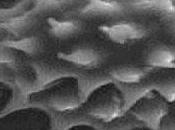
Meanwhile it is interesting to note that the pollens are not glued on the fibers and are not covered in color, as it would happen if there were a painting, but they are free, above or between flax fibers (the image on the left reproduces the same pollen found both on the Shroud and on the Shroud of Oviedo). But then it is important to remember that pollination, in enlarging the plots of the Shroud 36,000 times, has documented both the long journey made by this cloth, in two thousand years of history, (confirming that the famous tarp has sojourned in Palestine, Turkey, France and Italy); also its origin from Jerusalem (for example the Zygophillum Cneoridium, is located exclusively in the surroundings of Jerusalem and Sinai). But in addition to the pollens, also the studies on the traces of a typical loam also of Jerusalem (on the knee, the heel and the nose of Jesus), have confirmed its origin.
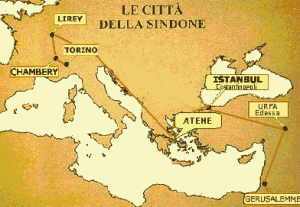
2
On the Shroud there are traces of blood
(not of painting), including aloe and myrrh
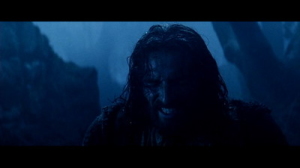
“… And His sweat became like drops of blood falling on the ground”(Lk 27, 44).
Luke, who was a doctor, reported this phenomenon with realism. The human nature of Jesus, knowing at that very moment what was about to happen, reacted with a huge terror and a very profound sadness. He almost seemed to die from it. All this was accompanied by a phenomenon, rare yes but that can occur in medicine, called HEMATRIDOSIS, in other words a special sweat accompanied by blood.
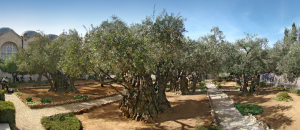
The phenomenon is this: in the face of a great fear or terror, the sweat glands dilate and, at the same time, there is a great vasodilation of the subcutaneous capillaries connected to the glands. This vasodilation of the capillaries produces a greater secretion of the sweat glands.
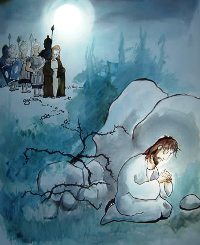
The sweat glands, dilated to the maximum, press against the capillaries that break. The blood of the broken capillaries, mixes with sweat and this mixture rises to the surface of the body by means of the pores. This mixture, once over the skin, splits: on one side the sweat that falls and on the other the blood that, denser, is maintained between the roughness of the skin and the lint, where it coagulates (the coagulation time goes from two and a half minutes to five minutes and a half). The small lumps, so formed above the skin, fall to the ground driven by the new and abundant sweat that continues to gush. And so forth.
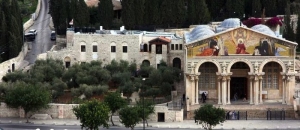
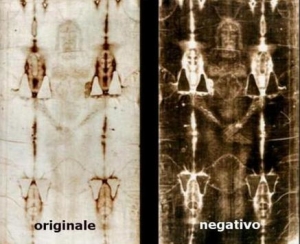
The body of the man wrapped by the Shroud, had to be all covered with a thin layer of sweat and blood (hemoglobin) that gave rise to the extraordinarily perfect imprint of his body. Part of the iron contained in the hemoglobin of the red blood cells remained incorporated into the textures of the tissue, because the electronic computer revealed the presence of micro traces of iron (one of the components of the hemoglobin), on the whole body imprint; Which is to show the presence of blood sweat on all its surface.
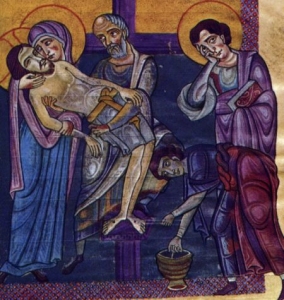
It has been possible to determine the blood group, that is, the AB group, the same one that resulted from the examination of the Flesh and the Blood of the miracle of Lanciano.
“And brought a mixture of myrrh and aloe of about one hundred pounds (about 33 kg). They then took the body of Jesus, and bound it (Édesan) with bandages (Othónia) together with aromatic oils, as it is customary to bury for the Jews. (Jn 19, 38-40)
Even the presence of aloe and myrrh has been ascertained.
3
The face of the man of the Shroud is a mask of blood

The nose, broken by a terrible blow, which swelled both a cheek and an eye, swollen is the lip for the fists received; Torn is the forehead from the thorns.
“And they hit his head with a cane, spitting on him and, bending their knees, prostrated to him. After having mocked him, they stripped him of the purple and put his clothes on him, then led him out to crucify him”(Mk 15-20)
“and spitting on him, they took the cane off his hand
and hit him on his head” (Mt 27.30)
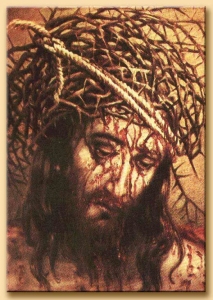
On the head of the man of the Shroud, they did not put a crown of thorns, but a real helmet of thorns. A kind of stinging helmet. “And the soldiers, braided a crown of thorns, placed it on his head and put on him a mantle of purple color, and said:
“Hail, O king of the Jews”; And they slapped him”(Jn 19.2-3)
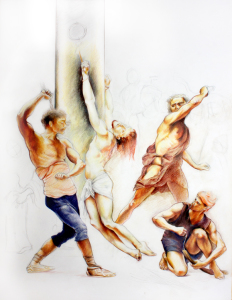
The Jet laboratory Propulsion in Pasadena had photos of the Shroud undergo a detailed analysis and reported the following: “the computer confirmed that Jesus was crowned with a full helmet of thorns. The right side of the face is disfigured. The hair of the left side of the face is soaked with blood… on the cheek you can see a punch blow that broke the cartilage of his nose. It is also possible to understand how he was scourged. He was taken into a straight position to receive the scourge by two men, one on one side and the other on the other side. Studies show that he received more than one hundred and twenty whips. Only the region of the heart was spared. “
4
The man of the shroud was scourged
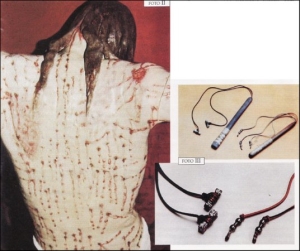
The lashing was dreaded punishment, because particularly gruesome. It was a flogging with sticks, rods or cat-o’-nine-tails cane which consisted, the Roman type, of a short stick with several ties ending with metal claws, weights and bone splinters that caused tremendous lacerations and fractures to the tortured one.
“Then Pilate took Jesus and scourged him” (Jn 19.1)
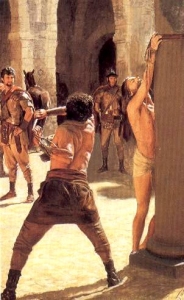
In Pilate’s minds, the roman governor of Judea, flagellation was aimed at the liberation of Jesus (“Pilate, summoned the Chief priests, the authorities and the people, said:
“You brought this man to me and accused him of inciting the people to revolt. I have conducted my investigation in your presence and have not found this man guilty of the charges you have brought against him, nor did Herod, for he sent him back to us. So no capital crime has been committed by him. Therefore I shall have him flogged and then release him.”(Lk 23).
Among the Romans, the lashing had no limits of shots, but it could not be executed on Roman citizens, whereby the man of the Shroud was not a Roman citizen. Jesus was not scourged during the ascent to Calvary, as it was customary, so the shots were distributed all over the body in an orderly manner, being him still.
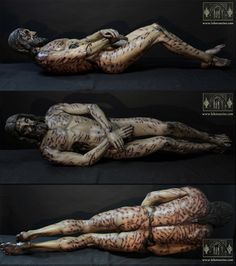
Among the flagella used there was one called flagrum taxillatum of which, in Rome, there is a specimen in the National Museum of the Terme. It was made of two small spheres connected by a 3 cm (little more than 1 inch) metal axle, mounted on two leather fixes. Numerous signs of the flagellation are visible in the image of the Shroud where the footprints of the fearsome Roman flagrum armed of balls of metal or bone fragments that tore skin and tore pieces of meat are distinguishable. The shots are spread over almost the entire body (approximately 120) with the exception of the heart, where they could cause death.
5
They did not do the Crurifragium
to the man in the shroud
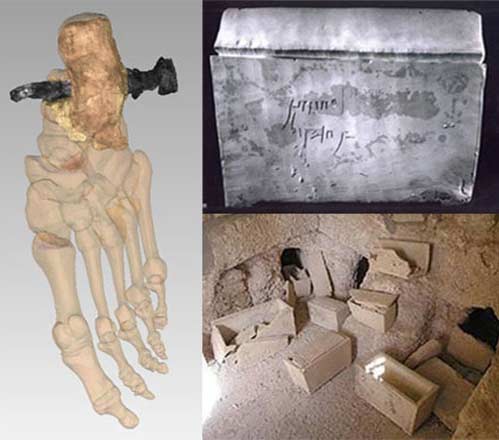
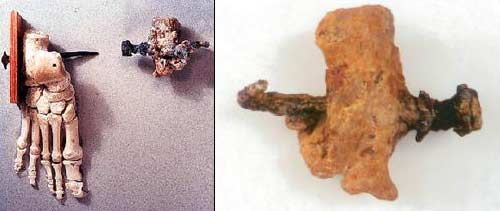
Jehohanan ben Hagqwl is the name that appears on the side of a tomb found in about one and a half kilometers north of the Damascus Gate in Jerusalem: is probably the name of a man condemned to the cross. The bones of the feet, found in this tomb, retain the nail that pierced them and that, having been curved at the crucifixion, was not removed from the flesh of the condemned before he was buried. Also on what remains of his right forearm, significant scratches can be noticed due, presumably, to the hammered nail. Both the left tibia and fibula are broken off (not due to the poor preservation or other condition); They suggest the special action, known as “crurifragium”, that the executioners enforced on the condemned to the gallows of the cross, to accelerate their death: breaking their legs with a slap shot, a big stick or a type of bat.
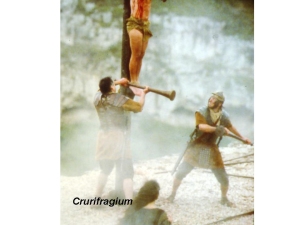
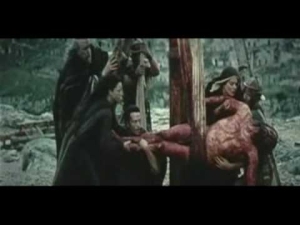
The image of the man of the Shroud does not show signs of lower limb fracture. There was no need to speed up his death because the man died within about three hours. The Gospel says that even Pilate marveled at the speed with which Jesus had died:
“Pilate was amazed that he was already dead. He summoned the centurion and asked him if Jesus had already died.” (Mark 15.44)
6
The man of the Shroud received a blow of spear
at the height of the heart, when he had already died
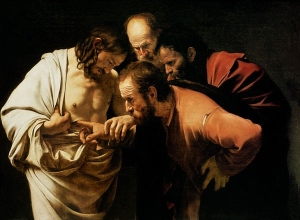
“It was the day of Parascève and the Jews, because the bodies did not remain on the cross during the Sabbath – it was a solemn day that Saturday –, they asked Pilate to break their legs and be taken away. So the soldiers came and broke the legs of the first and then of the other one who was crucified with Jesus. But when they came to Jesus and saw that he was already dead, they did not break his legs, but one soldier thrust his lance into his side, and immediately blood and water flowed out”(Jn 19)
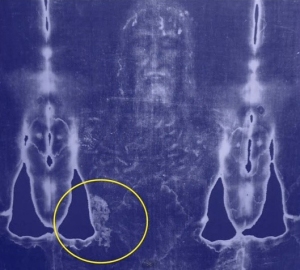
Also of this famous “spear shot in his side” we find clear traces in the Shroud canvas. The apocryphal tradition preserved in the “Acts of Pilate” indicates that the blow was dealt in the right side: in the same position shown on the Shroud. It is a wound with a length of 4.5 cm (around 3 inches) and a width of 1.5 cm (around little less than ½ inch), with the typical appearance of a tip and cut wound and localized in the fifth intercostal space.

But in addition to the blood there is also a trace, which surrounds it entirely and that in a certain sense has diluted it. It is serum, the liquid part of the complete blood substance. In the canvas, therefore, there are traces of that blood and “that water” of which John so much in detail tells us. A painter or any medieval forger could hardly simulate such an event, because at that time, of the liquid and corpuscular part of the blood, they did not know absolutely anything.
7
The shroud has wrapped a corpse
already in Rigor Mortis
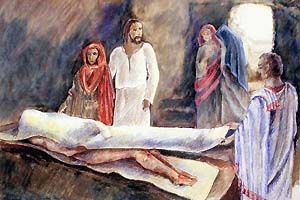
“Joseph (of Arimathea), Taking the body, Joseph wrapped it (in) clean linen (sindòn) and laid it in his new tomb that he had hewn in the rock. Then he rolled a huge stone across the entrance to the tomb and departed.” (Mt 27.59-60)
That the shroud has wrapped a corpse, we are told with certainty by the “rigor mortis” of the body and the traces of blood of the ribs (dead blood).
8
The man of the shroud remained wrapped
in the sheet for less than 40 hours
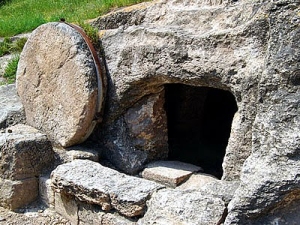
We know with certainty that the man of the shroud has been wrapped in the sheet for no more than 36-40 hours because, under the microscope, there are no traces of rot (which begins precisely after that term). In fact Jesus also remained in the sepulchre from about 6:00 pm on that Friday, to the dawn of Sunday. About 35 hours.
“The first day after Saturday, early morning, they took the spices they had prepared and went to the tomb. They found the stone rolled away from the sepulchre; but when they entered, they did not find the body of the Lord Jesus.”(Lk 24, 1-2)
9
The bandages were flat, emptied, and unfolded
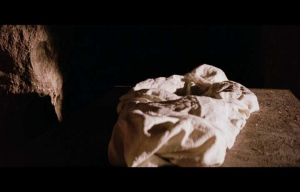
“But Peter got up and ran to the tomb, bent down, and saw the burial cloths alone (othónia); then he went home amazed at what had happened.” (LC 24.12)
Is it legitimate to ask: why that great amazement? The body, for example, could have been stolen; Why didn’t Peter think about this at all? There’s a reason.
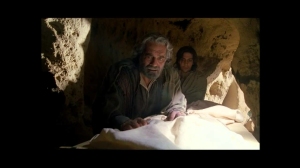
In his eyes (and of John’s, as he himself explains in his gospel) everything was exactly in the same position of three days before! The sheet and sashes were neither open nor loose: they were simply flat on themselves. In other words, the body of Jesus, during resurrection, had not taken off the bandages, but it went through them without moving them.
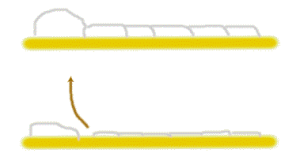
That body had vanished from the inside of the sheet (shroud) that wrapped it and then the cloth and sashes, no longer having something to wrap, were simply flat on themselves. Stealing a body would have meant cutting them, tearing them apart or, at least, moving them. Instead, that body “came out” of the bandage, without any physical movement of the body itself; like passing through the sheet. It is this the fascinating part of the studies on the Shroud: The traces of the resurrection of Jesus.
10
The image of the man of the Shroud is three-dimensional;
an imprint left by an explosion of light.
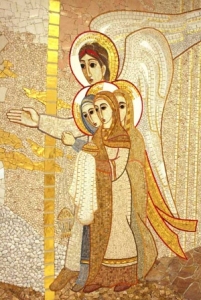
“Then the angel said to the women in reply, “Do not be afraid! I know that you are seeking Jesus the crucified. He is not here, for he has been raised just as he said.”(Mt 28, 1-7)
If you look at the image in the Shroud, you notice that the face is not illuminated either from the right or from the left. It is the same source of light. Here I will describe two “footprints” of the resurrection, left on the shroud. The first one concerns the study done (with powerful microscopes) of the blood clots.
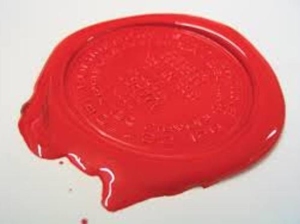
Large gushes of blood had penetrated the fibers of the linen, forming many large clots, and once dried all these clots had become large lumps of a hard material, but also very fragile, which glued the flesh to the cloth just as the same as the seals of wax would do. Well: None of these clots are broken and their shape is intact just as if the glued flesh to the linen had remained exactly in its place. The study of the microscopic clots reveals that the body is subtracted from the sheet without any movement, like passing through it.

The second footprint is the most fascinating of all: the image of that man (that has no trace of color or pigment) is the superficial burning of the linen, caused by the instantaneous release of a formidable and unknown source of light coming from the body itself, in orthogonal respect to the sheet (fact itself unexplained). An explosion of life-bearing energy!
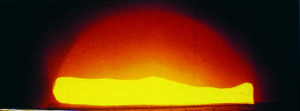
An atomic bomb that, instead of destroying, has given birth. An impulse of ultraviolet light that has “printed” the sindonic image, on the outermost layers of the single yarn of linen.

Some scholar speak of a “coronal effect”; in other words, of an energetic process, that does not relate simply with a chemical phenomenon by contact (because the image also exists in areas that certainly did not touch the skin of the man, like the one between the nose and cheeks or the one between the eyeball and eyebrows). But with a very powerful radiation lasting only an instant, or very short moment (a variable duration from few microseconds up to few seconds). In short: A flash of very powerful energy.
11
Neither “hard and pure Christians”
nor fanatics of the Shroud
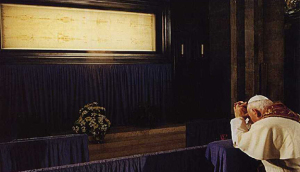
When it comes to the Shroud, people are often divided into two categories: the Christians “all of one piece” (who say: “Of the Shroud I am not concerned because my faith is not based on a linen”) and those who depart for the Shroud crusades (who, from the opposite side say: “Woe to doubt the authenticity”). Instead, it would not hurt us to look at that linen as a possible precious gift permitted by God. At the end of the liturgical sentence “all the earth desires your face”, right there is the secret of the great attraction towards this sheet.
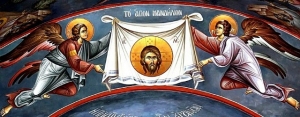
I want to end with an anecdote. The Bishop of Mileto, speaking of the famous mystic Natuzza Evolo, told this episode:
“Natuzza was asked: but is the shroud true or not true? – she replied: “The Shroud is truly the sheet that wrapped Jesus on the Good Friday, but science will never be able to prove it.”
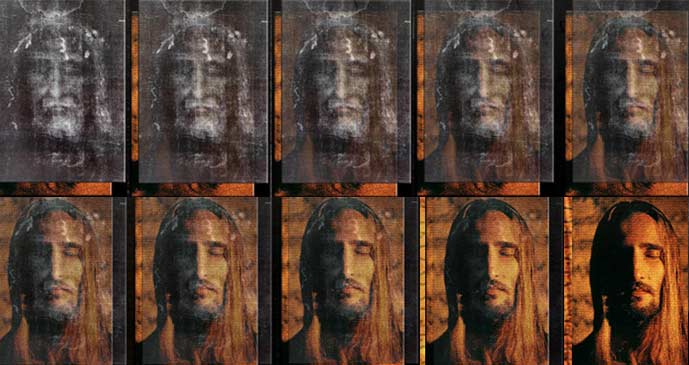
Source: In Te mi rifugio

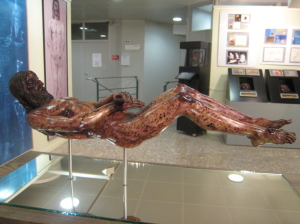
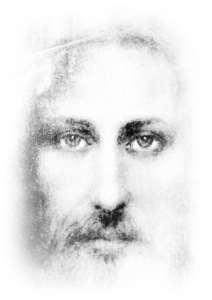
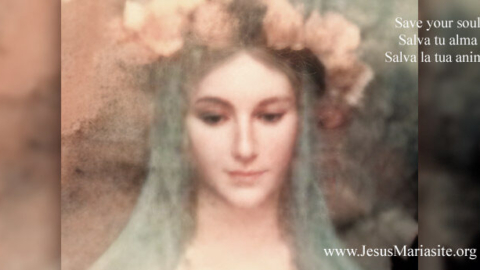

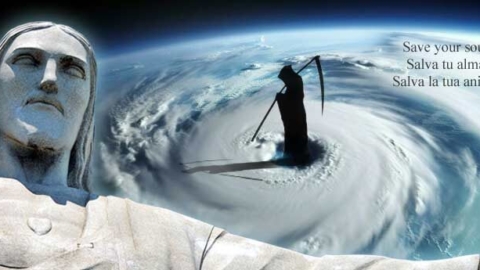






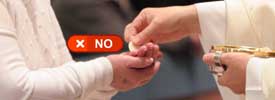









 Pray for the Church, its Hierarchies, the validly ordained and consecrated during this time of confusion and apostasy. Do not fall into the trap of division, even with apparent good reasons. Turn your eyes to the lives of saints, such as St. Martin de Porres, St. Padre Pio of Pietrelcina, the former discriminated against and the latter fought by the same institution. Let their behavior in adversity be an example for you to follow…
Pray for the Church, its Hierarchies, the validly ordained and consecrated during this time of confusion and apostasy. Do not fall into the trap of division, even with apparent good reasons. Turn your eyes to the lives of saints, such as St. Martin de Porres, St. Padre Pio of Pietrelcina, the former discriminated against and the latter fought by the same institution. Let their behavior in adversity be an example for you to follow…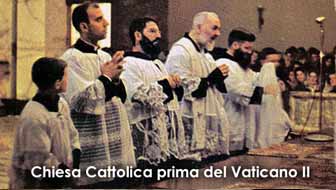
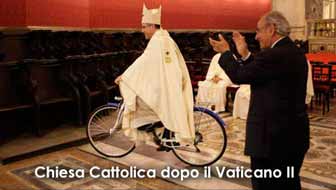
 “The Church is God’s house. It is forbidden for men to enter here with bare arms and wearing shorts. It is forbidden for women to enter wearing trousers, bare headed, with short, low-necked or sleeveless dresses.”
“The Church is God’s house. It is forbidden for men to enter here with bare arms and wearing shorts. It is forbidden for women to enter wearing trousers, bare headed, with short, low-necked or sleeveless dresses.”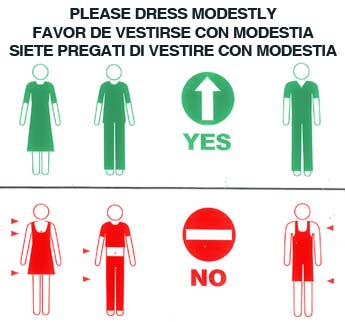
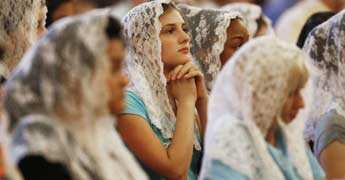
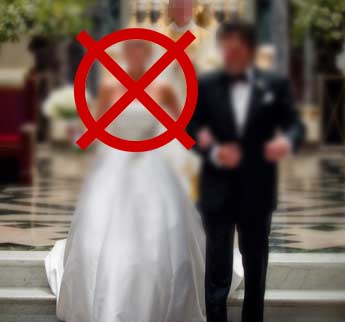
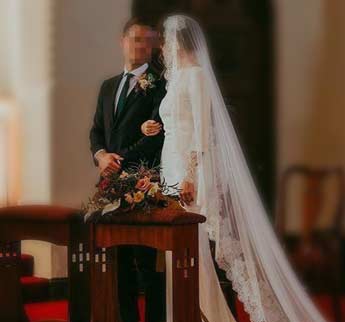
 “Parents, correct the ways if your family, have much dialogue with your children, make time to listen to them as many homes are being lost due to lack of love, dialogue, understanding and most specially for not inviting God. Take God back into your homes, pray my Holy Rosary, as the family that prays together stays together.”
“Parents, correct the ways if your family, have much dialogue with your children, make time to listen to them as many homes are being lost due to lack of love, dialogue, understanding and most specially for not inviting God. Take God back into your homes, pray my Holy Rosary, as the family that prays together stays together.” 




 January 31, 2022 "Heavenly Father, today, I surrender to You my heart. Help me to be Your instrument in the world. Cover me with the Precious Blood of Your Divine Son. Guard me against all evil. Protect me from any evil plan Satan may have for me today. Clothe me in Your Divine Will. Amen"
January 31, 2022 "Heavenly Father, today, I surrender to You my heart. Help me to be Your instrument in the world. Cover me with the Precious Blood of Your Divine Son. Guard me against all evil. Protect me from any evil plan Satan may have for me today. Clothe me in Your Divine Will. Amen" "O Hearts of Jesus and Mary; I consecrate myself, I consecrate my family and the whole world, to your Most Beloved Hearts. Listen to the supplication which I making to you and accept our hearts in Yours, to be delivered and protected we, the whole world, from all evil and all sin. May the protection of your Two Hearts be refuge, strength, and protection, in the daily spiritual struggles. That the power of your Two Hearts irradiates the world so that it is protected from evil and sin. We willingly consecrate ourselves and consecrate all mankind to your Hearts; sure and confident, for your Great Mercy, to obtain the victory over the forces of evil in this world, and the eternal Glory in the Kingdom of God. Amen"
"O Hearts of Jesus and Mary; I consecrate myself, I consecrate my family and the whole world, to your Most Beloved Hearts. Listen to the supplication which I making to you and accept our hearts in Yours, to be delivered and protected we, the whole world, from all evil and all sin. May the protection of your Two Hearts be refuge, strength, and protection, in the daily spiritual struggles. That the power of your Two Hearts irradiates the world so that it is protected from evil and sin. We willingly consecrate ourselves and consecrate all mankind to your Hearts; sure and confident, for your Great Mercy, to obtain the victory over the forces of evil in this world, and the eternal Glory in the Kingdom of God. Amen" "O Virgin of Carmel, may the power of your Holy Scapular take away from me the enemy of my soul; bless me, Mother of Carmel, and deliver me from all evil and danger in this world. I ask you O Mother, that in the hour of my death, your Holy Scapular frees me from the fury of the devil and in the eternity, of the eternal fire. Amen"
"O Virgin of Carmel, may the power of your Holy Scapular take away from me the enemy of my soul; bless me, Mother of Carmel, and deliver me from all evil and danger in this world. I ask you O Mother, that in the hour of my death, your Holy Scapular frees me from the fury of the devil and in the eternity, of the eternal fire. Amen" 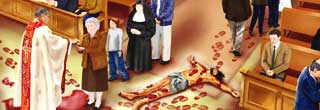
 "Oh Jesus of Divine Mercy, hear my pleadings to you, for I am here to do your Will"
"Oh Jesus of Divine Mercy, hear my pleadings to you, for I am here to do your Will" "O glorious St. Joseph! by your profound humility, by your unalterable meekness, by your invincible patience, by your angelic purity and perfect fidelity that made you a timely imitator of the virtues of Jesus and Mary, I ask you to console me in all my sorrows, to guide me in all my doubts, to defend me in all temptations, to deliver me from all spiritual and material dangers; to extend your arm against all my visible and invisible enemies, breaking and destroying all the snares and barriers that they tend and arm against me. Amen"
"O glorious St. Joseph! by your profound humility, by your unalterable meekness, by your invincible patience, by your angelic purity and perfect fidelity that made you a timely imitator of the virtues of Jesus and Mary, I ask you to console me in all my sorrows, to guide me in all my doubts, to defend me in all temptations, to deliver me from all spiritual and material dangers; to extend your arm against all my visible and invisible enemies, breaking and destroying all the snares and barriers that they tend and arm against me. Amen"  "Oh, blessed Saint Michael, protect us from the attacks and snares of the evil spirits because you know full well that we are poor mortals, fragile and weak, in need of the Mercy of God and of your protection to fulfill the mission that Heaven has commissioned to us. Oh, Saint Michael, may your victorious cry: “who is like God? no one is like God”, suppress and cast into Hell satan and all the evil spirits who prowl about the world seeking the destruction of souls. Amen"
"Oh, blessed Saint Michael, protect us from the attacks and snares of the evil spirits because you know full well that we are poor mortals, fragile and weak, in need of the Mercy of God and of your protection to fulfill the mission that Heaven has commissioned to us. Oh, Saint Michael, may your victorious cry: “who is like God? no one is like God”, suppress and cast into Hell satan and all the evil spirits who prowl about the world seeking the destruction of souls. Amen"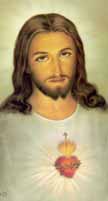 Most sweet Jesus, redeemer of the human race, look down upon us, humbly prostrate before your altar. We are yours and yours we wish to be; but to be more surely united with you, behold each one of us freely consecrates himself today to your most sacred heart. Many, indeed, have never known you, many too, despising your precepts, have rejected you. Have mercy on them all, most merciful Jesus, and draw them to your sacred heart. Be you king, O Lord, not only of the faithful who have never forsaken you, but also of the prodigal children who have abandoned you; grant that they may quickly return to their father’s house, lest they die of wretchedness and hunger. Be you king of those who are deceived by erroneous opinions, or whom discord keeps aloof, and call them back to the harbor of truth and unity of faith, so that soon there may be but one flock and one shepherd. Be you king also of all those who sit in the ancient superstition of the Gentiles, and refuse not you to deliver them out of darkness into the light and kingdom of God. Grant, O Lord, to your Church, assurance of freedom and immunity from harm; give peace and order to all nations, and make the earth resound from pole to pole with one cry: Praise to the divine heart that wrought our salvation; to it be glory and honor forever. Amen.
Most sweet Jesus, redeemer of the human race, look down upon us, humbly prostrate before your altar. We are yours and yours we wish to be; but to be more surely united with you, behold each one of us freely consecrates himself today to your most sacred heart. Many, indeed, have never known you, many too, despising your precepts, have rejected you. Have mercy on them all, most merciful Jesus, and draw them to your sacred heart. Be you king, O Lord, not only of the faithful who have never forsaken you, but also of the prodigal children who have abandoned you; grant that they may quickly return to their father’s house, lest they die of wretchedness and hunger. Be you king of those who are deceived by erroneous opinions, or whom discord keeps aloof, and call them back to the harbor of truth and unity of faith, so that soon there may be but one flock and one shepherd. Be you king also of all those who sit in the ancient superstition of the Gentiles, and refuse not you to deliver them out of darkness into the light and kingdom of God. Grant, O Lord, to your Church, assurance of freedom and immunity from harm; give peace and order to all nations, and make the earth resound from pole to pole with one cry: Praise to the divine heart that wrought our salvation; to it be glory and honor forever. Amen.